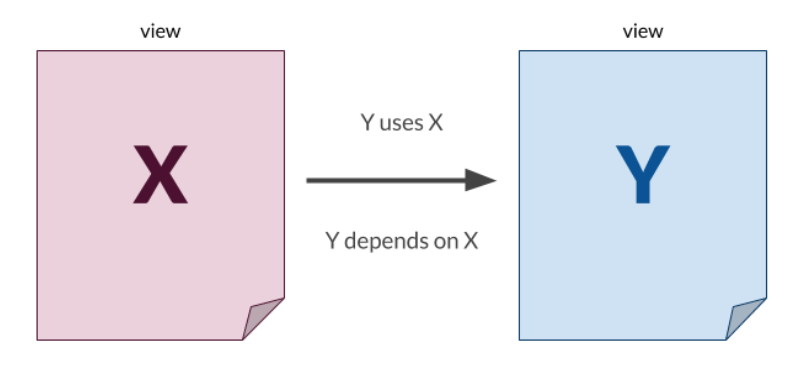Materialized Views
Two Types of Views
In SQL, there are two main types of views: non-materialized and materialized. Each serves a different purpose and operates in a distinct manner.
-
Non-materialized views:
- Virtual tables that execute queries in real-time without storing data on disk.
- When you encounter "views" plainly, they're most likely non-materialized views.
- For more information, please see Database Views and Managing Views.
-
Materialized views:
- Physically materialized
- Results of queries are stored on disk for faster data retrieval.
Materialized Views
Materialized views are advantageous for improving performance by storing query results on disk. When you query a materialized view, it accesses the stored query results on the disk, rather than running the query like a non-materialized view and creating a virtual table.
- Access precomputed data quickly, which is useful for complex queries.
- Require periodic refreshes to update stored results.
- Refresh or rematerialized when prompted or scheduled.
- Refresh schedules can be daily or hourly, based on data change frequency.
Materialized views are ideal for scenarios involving heavy data analysis and complex queries.
- Suitable for data warehouses where analysis is more common than data updates.
- Ideal for running long queries and getting results quickly.
It is not recommended for frequently updated data, as materialized views only reflect data as of the last refresh. This means that if your data is changing frequently, the analysis could be running too often on outdated data.
Implementing Materialized Views
Creating materialized views is similar to creating regular views but involves additional steps for refreshing data.
- Use
MATERIALIZEDin the SQL statement to create one. - Refresh using the
REFRESH MATERIALIZED VIEWcommand. - Automatic refreshes can be scheduled using cron jobs or similar tools.
Sample:
CREATE MATERIALIZED VIEW my_view_name AS
SELECT * FROM existing_table;
To refresh views:
REFRESH MATERIALIZED VIEW my_view_name
Managing Dependencies
Materialized views can depend on other views, requiring careful management to maintain data accuracy.
-
Refreshing multiple views at the same time is not efficient due to possible dependencies.
-
Ensure that dependent views are refreshed in the correct order to prevent outdated data.
-
For example, if view Y depends on view X, refresh X before Y.

Tools for Managing Dependencies
Advanced tools help manage complex dependencies and ensure efficient data refreshes.
- Use tools like Airflow or Luigi to track and schedule view refreshes.
- They utilize Directed Acyclic Graphs (DAGs) to manage dependencies and avoid circular dependencies.